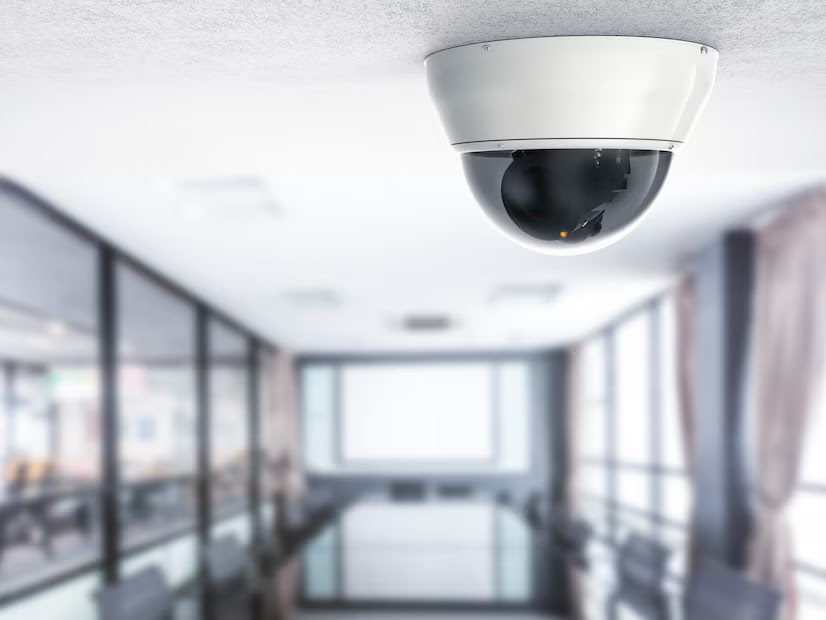As businesses continue to grow and evolve, so does the need for comprehensive building security. One of the most vital components of modern office security is video surveillance. Whether you’re safeguarding a small office park or a multi-story commercial complex, choosing the right office building security surveillance system—and understanding the camera types available—can make all the difference.

Selecting the Right Equipment for the Job with Office Building Security Surveillance and Cam Security Surveillance
Different office buildings require different camera setups depending on the layout, access points, and tenant activity. A one-size-fits-all approach doesn’t cut it when it comes to security. That’s why tailored solutions from Office Building Security Surveillance are ideal for property owners and facility managers. With guidance from trusted experts at Cam Security Surveillance, you can select cameras that offer the right resolution, coverage, and features for your specific space.
Let’s explore the most commonly used camera types in office building security systems and when to use each.
1. Dome Cameras
Dome cameras are widely used in office lobbies, hallways, and indoor common areas. Their discreet, dome-shaped design makes them less noticeable, helping deter potential wrongdoing without making the environment feel overly guarded.
They’re ideal for indoor monitoring and often come with infrared night vision, wide dynamic range, and vandal-resistant housings for added protection.
Best for: Office entrances, reception areas, and indoor hallways.
2. Bullet Cameras
Bullet cameras are easily recognizable thanks to their long, cylindrical shape. These cameras are excellent for outdoor use because they often include weatherproof casings and long-range lenses.
They’re often mounted on building exteriors to capture activity in parking lots, loading docks, and perimeter walkways. Their presence also serves as a strong visual deterrent.
Best for: Building perimeters, parking areas, and external doors.
3. PTZ (Pan-Tilt-Zoom) Cameras
PTZ cameras allow operators to control the pan, tilt, and zoom functions remotely. This makes them perfect for large open areas such as building lobbies or courtyards where coverage flexibility is critical.
They’re frequently used in conjunction with motion detection and real-time monitoring systems to track suspicious activity as it happens.
Best for: Large indoor/outdoor areas, common zones, and surveillance teams with active monitoring.
4. Fisheye and 360° Cameras
These cameras offer wide-angle or full 360-degree coverage, capturing every angle in a room from a single mounting point. This makes them a smart choice for monitoring open-plan offices, elevators, and conference spaces.
Instead of using multiple cameras to cover different directions, a fisheye camera can offer panoramic coverage with fewer blind spots.
Best for: Conference rooms, shared offices, and elevators.
5. Wireless and IP Cameras
As wireless technology improves, many office buildings are choosing Wi-Fi-enabled or network-based (IP) cameras. These systems are easier to install, scalable, and often support features like cloud storage, mobile access, and AI analytics.
IP cameras also provide higher resolution and the ability to integrate with other building systems, making them a future-ready choice.
Best for: Buildings that want flexibility, mobile access, and minimal wiring.
6. Hidden or Covert Cameras
Hidden cameras are usually deployed in sensitive areas where discretion is required. This could include HR offices, executive suites, or supply rooms where confidential materials are stored.
While these cameras are not always necessary for general office surveillance, they can be useful for targeted monitoring in specific risk areas.
Best for: Sensitive locations and areas under internal investigation.
7. License Plate Recognition (LPR) Cameras
For office buildings with private garages or gated lots, LPR cameras are used to track and record vehicles entering and exiting the premises. These cameras offer high precision, even at night or in poor weather.
They can be integrated with access control systems to automate entry for approved vehicles, making traffic management and access safer and smoother.
Best for: Parking garages, gated entries, and secured vehicle zones.
8. Thermal and Infrared Cameras
These specialized cameras use heat signatures to detect movement, making them useful for areas with low or no lighting. While not common in all office environments, they’re valuable for critical infrastructure sites or after-hours security.
Best for: Unlit exteriors, utility rooms, and remote surveillance.
How to Choose the Right Mix of Cameras
A smart office building surveillance system doesn’t rely on just one type of camera. Instead, it uses a combination to meet the needs of different areas within the property.
When planning your setup, consider:
-
The layout of the building (open vs. enclosed)
-
The size and scope of outdoor areas
-
Entry points, emergency exits, and restricted zones
-
Tenant behavior and traffic patterns
-
Lighting conditions (natural vs. artificial)
Consulting a professional can help ensure your investment is maximized and your coverage is complete.
Benefits of Using the Right Camera Types
Using the right mix of surveillance cameras ensures:
-
Better coverage with fewer blind spots
-
More efficient use of hardware and storage
-
Faster identification and response to incidents
-
Higher tenant satisfaction and safety
-
Greater system longevity with fewer upgrades needed
Conclusion
Every office building is different—and the security solution should reflect that. Choosing the right types of surveillance cameras ensures complete coverage, enhances safety, and protects valuable property and people.
For personalized solutions and expert advice, visit Office Building Security Surveillance and partner with Cam Security Surveillance for professional design, installation, and support.








